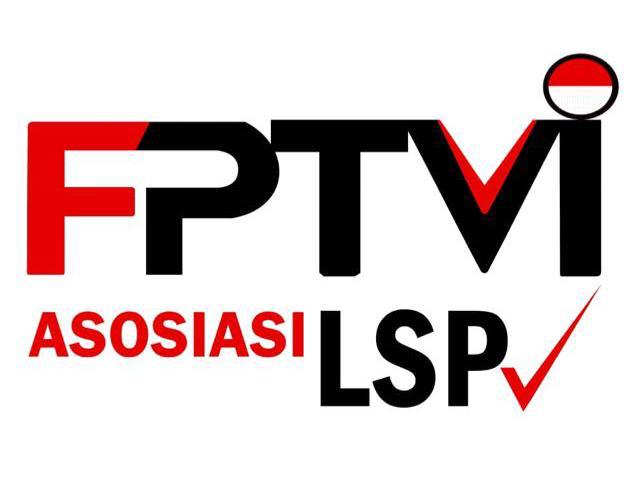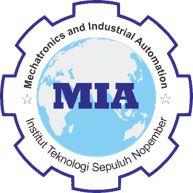Physicochemical Properties of Crude and Purified of Glucomannan Flours
Abstract
Konjac glucomannan (KGM) is a versatile polysaccharide extracted from Amorphophallus species tubers. Commonly, extracted crude porang flour still has some impurities which limits the application of utilizing the material. High purity of processed glucomannan flour could satisfy the demand of growing awareness of healthy diet and industrial scale production. In this study, the physicochemical properties of purified glucomannan flour compared with crude porang flour were investigated. Thermal stability of the purified flour was increased indicated by higher degradation temperature, which was revealed by Thermogravimetric Analysis (TGA). The structural characteristics were investigated by FTIR and X-ray Diffraction (XRD) analysis. In addition, Scanning Electron Microscopy (SEM) was conducted to study the morphology and grain size of crude and purified flours. The results revealed that purified glucomannan flour has better thermal stability, higher crystallinity, smaller granule size and significantly higher viscosity compared to crude flour.
Keywords
Full Text:
PDFReferences
S. B. Widjanarko, A. Nugroho, and T. Estiasih, “Functional interaction components of protein isolates and glucomannan in food bars by FTIR and SEM studies,” African J. Food Sci., vol. 5, no. 1, pp. 12–21, 2011.
Y. Rahayuningsih, “Strategi Pengembangan Porang (Amorphophalus Muelleri) Di Provinsi Banten,” J. Kebijak. Pembang. Drh., vol. 4, no. 2, pp. 77–92, Dec. 2020.
K. Nishinari, P. A. Williams, and G. O. Phillips, “Review of the physico-chemical characteristics and properties of konjac mannan,” Food Hydrocoll., vol. 6, no. 2, pp. 199–222, Jun. 1992.
Y. He, J. Guo, G. Ren, G. Cui, S. Han, and J. Liu, “Effects of konjac glucomannan on the water distribution of frozen dough and corresponding steamed bread quality,” Food Chem., vol. 330, p. 127243, Nov. 2020.
P. Himashree, A. S. Sengar, and C. K. Sunil, “Food thickening agents: Sources, chemistry, properties and applications - A review,” Int. J. Gastron. Food Sci., vol. 27, p. 100468, Mar. 2022.
O. Mekkerdchoo, C. Borompichaichartkul, A. Perrigo, G. Srzednicki, C. Prakitchaiwattana, and A. Antonelli, “Tracing the Evolution and Economic Potential of Konjac Glucomannan in Amorphophallus species (Araceae) using Molecular Phylogeny and RAPD Markers,” Phytotaxa, vol. 282, no. 2, p. 81, Oct. 2016.
N. M. A. W. Utami, “Economic Prospects Of Porang Plant Development In The Pandemic Time Covid-19,” VIABEL J. Ilm. Ilmu-Ilmu Pertan., vol. 15, no. 1, pp. 72–82, May 2021.
E. W. Riptanti, H. Irianto, and Mujiyo, “Strategy to improve the sustainability of ‘porang’ ( Amorphophallus muelleri Blume) farming in support of the triple export movement policy in Indonesia,” Open Agric., vol. 7, no. 1, pp. 566–580, Jul. 2022.
E. Harmayani, V. Aprilia, and Y. Marsono, “Characterization of glucomannan from Amorphophallus oncophyllus and its prebiotic activity in vivo,” Carbohydr. Polym., vol. 112, pp. 475–479, Nov. 2014.
Volza, “Indonesia Glucomannan imports,” 2023. https://www.volza.com/p/glucomannan/import/import-in-indonesia/.
L. Peiying, “Professional Standard of the Konjac flour,” Minist. People’s Repub. China, 2002.
R. W. L. Nurmayanti, T. K. Waluyo, I. Puspita, A. Agusni, and L. A. Putri, “Serpih porang (Amorphophallus muelleri Blume) sebagai bahan baku,” 2020.
A.O.A.Chemists, “Analytical Methods 1 . Moisture content (AOAC, 1999 ) Method 3 . Biuret method ( Robinson and Hodgen , 1940 ) Reagents,” Wood Chem. Wood Biotechnol., pp. 124–130, 2001.
N. Thiex, L. Novotny, and A. Crawford, “Determination of ash in animal feed: AOAC Official Method 942.05 revisited,” J. AOAC Int., vol. 95, no. 5, pp. 1392–1397, 2012.
A. Sarifudin, L. Ratnawati, N. Indrianti, R. Ekafitri, E. Sholichah, N, Afifah, D. Desnilasari, P. Nugroho, and A. D. Yuniar, “Evaluation of some analytical methods for determination of calcium oxalate in Amorphophallus muelleri flour,” Food Sci. Technol., vol. 42, pp. 1–7, 2022.
N. Chairiyah, N. Harijati, and R. Mastuti, “Variation of Calcium Oxalate (CaOx) Crystals in Porang Corms (<i>Amorphophallus muelleri</i> Blume) at Different Harvest Time,” Am. J. Plant Sci., vol. 07, no. 02, pp. 306–315, 2016.
D. H. Wardhani, N. Aryanti, F. Murvianto, and D. Ken Dimas Yogananda, “Peningkatan Kualitas Glukomanan dari Amorphophallus oncophyllus Secara Enzimatis dengan ɑ-Amilase,” Inov. Tek. Kim., vol. 1, no. 1, pp. 71–77, 2016.
N. Nurlela, N. Ariesta, E. Santosa, and T. Muhandri, “Physicochemical properties of glucomannan isolated from fresh tubers of Amorphophallus muelleri Blume by a multilevel extraction method,” Food Res., vol. 6, no. 4, pp. 345–353, 2022.
N. Chairiyah, N. Harijati, and R. Mastuti, “The Relationship of Chemical Compounds and Crystal Development in Porang Tuber (Amorphophallus muelleri Blume),” J. Exp. Life Sci., vol. 13, no. 1, pp. 1–11, Feb. 2023.
L. Guo, W. Yokoyama, L. Chen, F. Liu, M. Chen, and F. Zhong, “Characterization and physicochemical properties analysis of konjac glucomannan: Implications for structure-properties relationships,” Food Hydrocoll., vol. 120, p. 106818, Nov. 2021.
B. Azhar, S. Gunawan, S. Febriana, R. Eunike, L. Majidah, F. Taufany, L. Atmaja, H. K. Aparamarta, “Purification and separation of glucomannan from porang tuber flour (Amorphophallus muelleri) using microwave assisted extraction as an innovative gelatine substituent,” Heliyon, vol. 9, no. 11, p. e21972, Nov. 2023.
S. Takigami, “Konjac glucomannan,” in Handbook of Hydrocolloids, Elsevier, 2021, pp. 563–577.
M. Wen, X. Ni, W. Xiao, Y. Li, and Z. Gao, “Influence of dispersion media on the rheology and oral tribology of the konjac glucomannan/xanthan gum thickener,” J. Food Meas. Charact., vol. 18, no. 6, pp. 4472–4483, Jun. 2024.
Y. Jiang, X. Zhou, Y. Zheng, D. Wang, Y. Deng, and Y. Zhao, “Impact of ultrasonication/shear emulsifying/microwave-assisted enzymatic extraction on rheological, structural, and functional properties of Akebia trifoliata (Thunb.) Koidz. seed protein isolates,” Food Hydrocoll., vol. 112, p. 106355, Mar. 2021.
A. K. Chew, M. Sender, Z. Kaplan, A. Chandrasekaran, J. Chief Elk, A.R Browning, H.S. Kwak, M. D. Halls, M. A. F. Afzal, “Advancing material property prediction: using physics-informed machine learning models for viscosity,” J. Cheminform., vol. 16, no. 1, p. 31, Mar. 2024.
V. Singh and K. Kaur, “Development, formulation and shelf life evaluation of baby corn soup mix from industrial by-products,” J. Food Sci. Technol., vol. 57, no. 5, pp. 1917–1925, May 2020.
A. Irawan, H. Alwan, D. Satria, F. Saepurohman, and A. Kurniawan, “Increased energy content of rice husk through torrefaction to produce quality solid fuel,” 2019, p. 020021.
G. K. Harris and M. R. Marshall, “Ash Analysis,” 2017, pp. 287–297.
A. Yanuriati, D. W. Marseno, Rochmadi, and E. Harmayani, “Characteristics of glucomannan isolated from fresh tuber of Porang (Amorphophallus muelleri Blume),” Carbohydr. Polym., vol. 156, pp. 56–63, 2017.
A. B. D. Nandiyanto, R. Oktiani, and R. Ragadhita, “How to read and interpret ftir spectroscope of organic material,” Indones. J. Sci. Technol., vol. 4, no. 1, pp. 97–118, 2019.
M. Zheng, Y. Wei, X. Jiao, Z. Jiang, H. Ni, Q. Li, Y. Zhu, “Improving Gel Properties of Glucomannan/κ-carrageenan Blends by Controlling Ethanol pH for Glucomannan Purification,” Food Biophys., vol. 19, no. 2, pp. 400–411, Jun. 2024.
A. Acemi, O. Cobanoglu, and S. T. Kaya, “FTIR‐based comparative analysis of glucomannan contents in some tuberous orchids, and effects of pre‐processing on glucomannan measurement,” J. Sci. Food Agric., vol. 99, no. 7, pp. 3681–3686, May 2019.
R. Thakur, P. Pristijono, J. B. Golding, C.E Stathopoulos, C. J. Scarlett, M. Bowyer, S. P. Singh, and Q. V. Vuong, “Amylose-lipid complex as a measure of variations in physical, mechanical and barrier attributes of rice starch- ι -carrageenan biodegradable edible film,” Food Packag. Shelf Life, vol. 14, no. October, pp. 108–115, 2017.
X.-Y. Liu, H.-Y. Yu, Y.-Z. Liu, Z. Qin, H.-M. Liu, Y.-X. Ma, and X.-D. Wang, “Isolation and structural characterization of cell wall polysaccharides from sesame kernel,” LWT, vol. 163, p. 113574, Jun. 2022.
V. Gargiulo, A. I. Ferreiro, P. Giudicianni, S. Tomaselli, M. Costa, R. Ragucci, and M. Alfe, “Insights about the effect of composition, branching and molecular weight on the slow pyrolysis of xylose-based polysaccharides,” J. Anal. Appl. Pyrolysis, vol. 161, p. 105369, Jan. 2022.
J.-X. Xiao, L.-H. Wang, T.-C. Xu, and G.-Q. Huang, “Complex coacervation of carboxymethyl konjac glucomannan and chitosan and coacervate characterization,” Int. J. Biol. Macromol., vol. 123, pp. 436–445, Feb. 2019.
R. Moriana, Y. Zhang, P. Mischnick, J. Li, and M. Ek, “Thermal degradation behavior and kinetic analysis of spruce glucomannan and its methylated derivatives,” Carbohydr. Polym., vol. 106, pp. 60–70, Jun. 2014.
R. Huo, M. Zhang, X. Guo, Y. Zhang, Y. Zhang, X. Bai, and J. Zhang, “Effect of Extrusion and Konjac Flour Addition on the Antioxidant Activity, Structural Properties, and In vitro Digestibility of Extruded Oat–Corn Flour,” Starch - Stärke, vol. 74, no. 3–4, Mar. 2022.
X. Ran and H. Yang, “Promoted strain-hardening and crystallinity of a soy protein-konjac glucomannan complex gel by konjac glucomannan,” Food Hydrocoll., vol. 133, p. 107959, Dec. 2022.
DOI: http://dx.doi.org/10.12962%2Fj23378557.v10i2.a20625
Refbacks
- There are currently no refbacks.
This work is licensed under a Creative Commons Attribution 4.0 International License. IPTEK The Journal of Engineering published by Pusat Publikasi Ilmiah, Institut Teknologi Sepuluh Nopember.
Please contact us for order or further information at: email: iptek.joe[at]gmail.com Fax/Telp: 031 5992945. Editorial Office Address: Pusat Riset Building 6th floor, ITS Campus, Sukolilo, Surabaya 60111, Indonesia.








